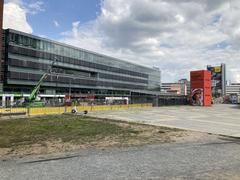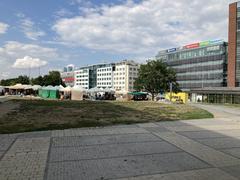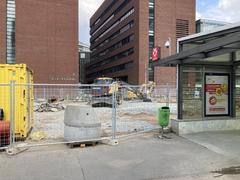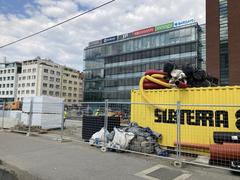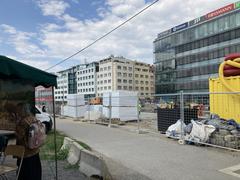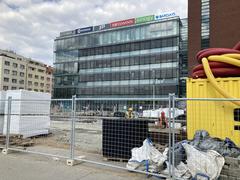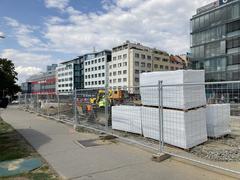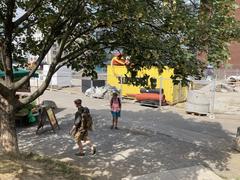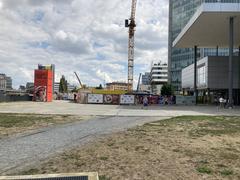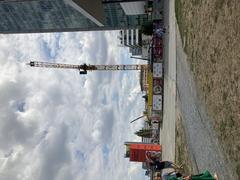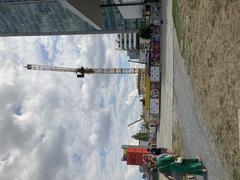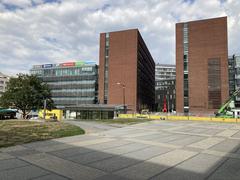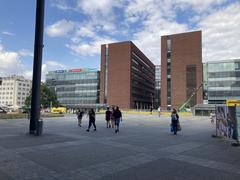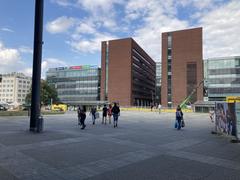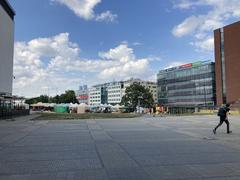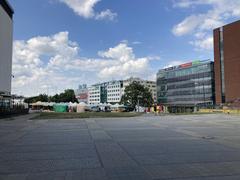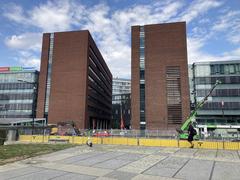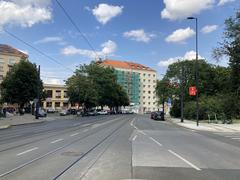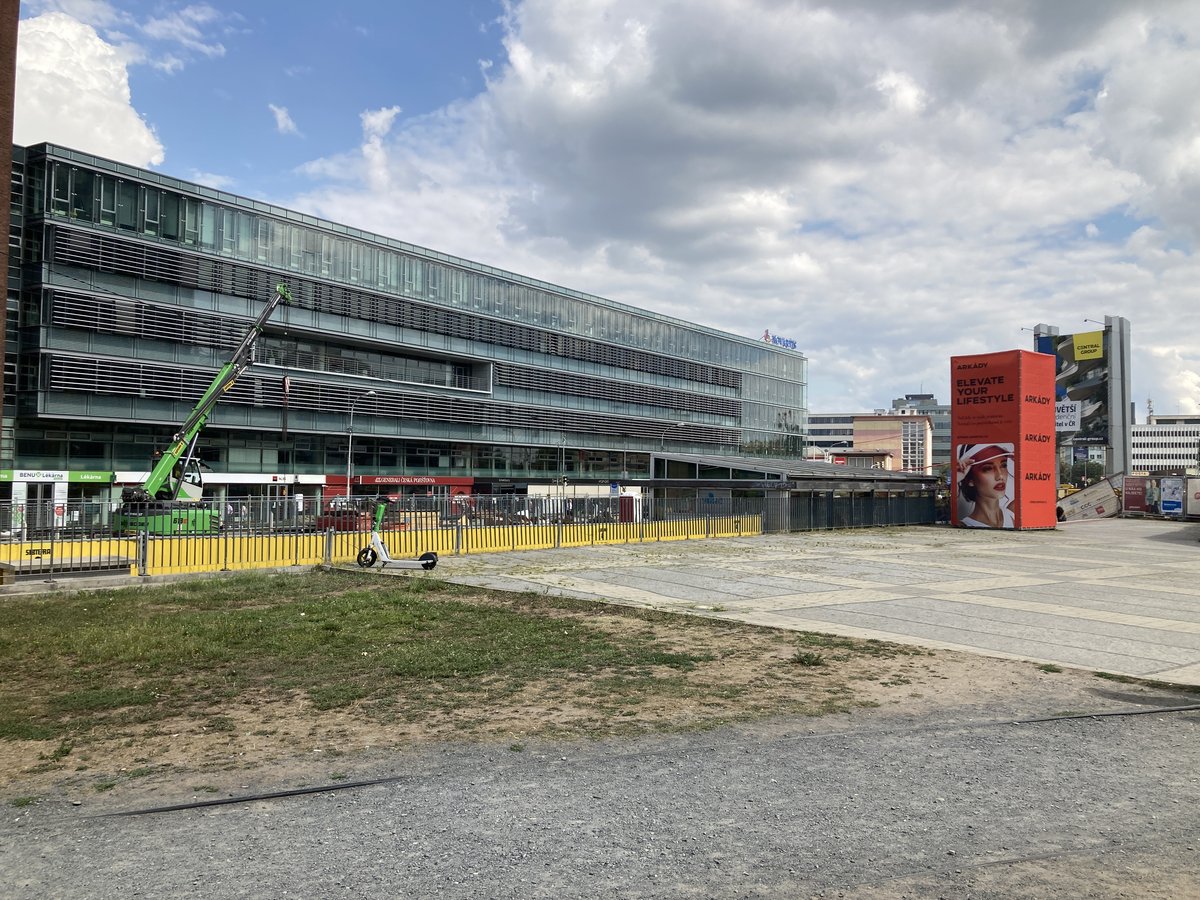
Pankrác Prague Historical Site: Visiting Hours, Tickets, and Travel Guide
Date: 14/06/2025
Introduction to Pankrác Historical Site in Prague
Located just south of Prague’s UNESCO-listed historic center, the Pankrác district is a compelling destination that blends deep historical roots with dynamic modern urban life. Pankrác is home to the renowned Pankrác Prison—steeped in poignant 20th-century history—and is framed by cutting-edge sustainable architecture that shapes the city’s evolving skyline. Whether you’re intrigued by the area’s powerful stories of political resilience at the Pankrác Memorial, want to photograph modern icons like City Empiria and V Tower, or seek shopping and leisure at Arkády Pankrác, this neighborhood caters to a wide spectrum of interests.
Understanding Pankrác’s development—from its Baroque beginnings centered around the Church of St. Pancras, through Austro-Hungarian urbanization, to its complex 20th-century history—enriches any visit. While public access to the prison is restricted, the district offers accessible green spaces, panoramic city views, and a growing cultural scene. This guide provides historical insights, practical information on visiting hours and tickets, accessibility tips, and travel advice to help you make the most of your time in Pankrác. For the most current information on tours, events, and transport, check official Prague tourism sources and consider using the Audiala app to enhance your experience (Pankrác Prison and Neighborhood; Discover Pankrác; Pankrác Memorial; Arkády Pankrác).
Contents
- Introduction
- Origins and Early Development
- Austro-Hungarian Expansion and Urbanization
- Twentieth-Century Transformations
- Interwar Period and the First Czechoslovak Republic
- Nazi Occupation and World War II
- Visiting Pankrác Prison and Neighborhood
- Visiting Hours and Tickets
- How to Get There
- Accessibility
- Nearby Attractions and Photographic Spots
- Special Events and Guided Tours
- Discovering Pankrác Memorial
- History and Significance
- Visiting Hours and Ticket Information
- How to Get to Pankrác Memorial
- Accessibility
- Photography and Special Events
- Exploring Pankrác’s Urban Landscape and Architectural Highlights
- Pankrác Plain: Prague’s Modern Skyline
- City Empiria and V Tower
- Arkády Pankrác Shopping Centre
- Pankrác Park and Green Spaces
- Nusle Bridge
- Kavčí Hory: Media and Broadcasting Hub
- Cultural and Historical Points of Interest
- Proximity to Vyšehrad
- Pankrác Prison
- Modern Leisure and Entertainment
- Aquacentrum Pankrác
- Local Dining and Nightlife
- Events and Community Life
- Visitor Tips for Exploring Pankrác
- Accessibility and Transportation
- Accommodation Options
- Safety and Practical Information
- Best Times to Visit
- Local Etiquette
- Frequently Asked Questions (FAQ)
- Conclusion
- Call to Action
Origins and Early Development
Pankrác occupies hills on the eastern bank of the Vltava River, just south of central Prague. The district draws its name from the Baroque-era Church of St. Pancras, a historical landmark reflecting early religious and communal significance (Wikipedia). Originally a rural outskirt with expansive farmlands and panoramic views, Pankrác began transforming in the late 19th century as Prague’s industrialization spurred urban expansion (GoOutCZ).
Austro-Hungarian Expansion and Urbanization
Between 1885 and 1889, the Austro-Hungarian Empire launched major urbanization projects, including the construction of Pankrác Prison—then the “Male Prison of the Emperor King in Prague.” The new facility replaced the outdated St. Wenceslas prison, integrating Pankrác into Prague’s growing cityscape (Prague Morning). The prison was state-of-the-art for its time, initially accommodating male inmates in group and single cells; a women’s section was only added in 2008.
Twentieth-Century Transformations
Interwar Period and the First Czechoslovak Republic
Following World War I and the collapse of the Austro-Hungarian Empire, Pankrác Prison became Czechoslovakia’s chief penitentiary. The adjacent court complex—now the Superior Court of Prague—was built and connected directly to the prison, underscoring the area’s judicial significance (Prague Morning).
Nazi Occupation and World War II
During the Nazi occupation (1939–1945), Pankrác Prison was used by the Gestapo and SS for the incarceration, torture, and execution of resistance members. Between April 1943 and April 1945, at least 1,079 people—175 of them women—were executed by guillotine inside the prison. Many others were sent to German prisons or concentration camps (Prague Morning; Radio Prague International).
Visiting Pankrác Prison and Neighborhood
Visiting Hours and Tickets
Pankrác Prison is not open for regular public tours due to its ongoing function. However, special guided tours are occasionally offered on historic anniversaries or for educational purposes—check official Prague tourism resources for current details.
How to Get There
Pankrác is easily accessible via the Metro Line C (Pankrác station), with additional tram and bus links. The area is well connected to the rest of Prague.
Accessibility
The neighborhood features paved sidewalks and public transit facilities, making it accessible to most visitors. Internal access to the prison is highly restricted for security reasons.
Nearby Attractions and Photographic Spots
While you cannot enter the prison, you can explore the Church of St. Pancras, the surrounding Nusle district, and enjoy panoramic city views from the Pankrác Plain.
Special Events and Guided Tours
On select dates, special events or historical tours highlight Pankrác’s past and its role in Czech history. Watch for announcements on official websites.
Discovering Pankrác Memorial
History and Significance
The Pankrác Memorial honors victims of political oppression, especially from the Nazi and communist eras. It stands near the historic prison as a site for reflection and remembrance, with plaques and sculptures telling stories of resilience (Pankrác Memorial).
Visiting Hours and Tickets
- Opening Hours: Daily, 9:00 AM – 6:00 PM
- Tickets: Free entry; donations welcomed
- Guided Tours: Weekends at 11:00 AM and 3:00 PM (advance booking advised)
Check the official Pankrác Memorial website for updates on events and exhibitions.
How to Get There
Take Metro Line C to Pankrác station; the memorial is a 5-minute walk away. From Václav Havel Airport, use bus/metro connections (total journey: 45–60 minutes). Taxis and ride-hailing services are also available.
Accessibility
The memorial and nearby facilities are wheelchair accessible. Contact the memorial in advance for special assistance if needed.
Photography and Special Events
Photography is allowed, but visitors should maintain a respectful atmosphere. Special events are held on key dates such as International Human Rights Day and Prague Liberation Day.
Exploring Pankrác’s Urban Landscape and Architectural Highlights
Pankrác Plain: Prague’s Modern Skyline
Developed as a citywide center in the 1990s, the Pankrác Plain features high-rise modern buildings contrasting Prague’s medieval core (UNESCO). These developments reflect Prague’s urban evolution.
City Empiria and V Tower
- City Empiria: Completed in 1980, this 104-meter office tower is a key landmark (Atlas Obyvatelstva). Public access is limited; check with building management for special events or tours.
- V Tower: Finished in 2018, this residential skyscraper is the Czech Republic’s tallest, with a distinctive glass façade popular among photographers.
Arkády Pankrác Shopping Centre
Open daily from 9:00 AM to 9:00 PM, Arkády Pankrác features over 125 shops, restaurants, and entertainment venues (Arkády Pankrác). The center is accessible via Pankrác metro and often hosts cultural events.
Pankrác Park and Green Spaces
Next to the business district, Pankrác Park offers year-round green space, walking paths, and playgrounds—ideal for relaxation and family outings.
Nusle Bridge (Nuselský most)
Spanning 485 meters, Nusle Bridge connects Pankrác to the city center, carrying both road traffic and Metro Line C (Atlas Obyvatelstva). It’s an impressive modernist structure and a favorite for urban photography.
Kavčí Hory: Media and Broadcasting Hub
Kavčí Hory, on Pankrác’s western edge, is home to Czech Television. While the complex is not open to the public, Kavčí Hory Park offers recreation and city views.
Cultural and Historical Points of Interest
Proximity to Vyšehrad
Vyšehrad, a 10th-century fortified settlement, is just a short ride or walk from Pankrác. Explore the Basilica of St. Peter and St. Paul and the Vyšehrad Cemetery for a taste of Prague’s medieval heritage (View from Prague).
Pankrác Prison
Though not open for tours, Pankrác Prison’s exterior is visible and serves as a stark reminder of the area’s history.
Modern Leisure and Entertainment
Aquacentrum Pankrác
This indoor swimming complex is open daily from 7:00 AM to 10:00 PM. Facilities include pools, water slides, saunas, and massages, with tickets starting at 150 CZK (Prague Tourist Information).
Local Dining and Nightlife
Enjoy a range of dining options, from traditional Czech pubs to trendy cafés, offering both local favorites and international cuisine (Go Real Travel).
Events and Community Life
The business district and shopping center regularly host cultural events, seasonal markets, and exhibitions. Check official websites for schedules.
Visitor Tips for Exploring Pankrác
Accessibility and Transportation
Pankrác is served by Metro Line C and numerous bus and tram routes. The area is pedestrian-friendly, though busy intersections require caution. Note: Pankrác Metro Station is scheduled for closure during 2025–2026 due to construction of Metro Line D, with alternative transport provided (Česká televize).
Accommodation Options
Choose from business hotels like the Panorama Hotel Prague or modern serviced apartments for a quieter stay with easy access to the city center.
Safety and Practical Information
Pankrác is generally safe, well-lit, and regularly patrolled. Remain aware of your surroundings, especially after dark.
Best Times to Visit
Spring and autumn offer pleasant weather and fewer crowds. Weekdays are lively due to business activity, while weekends are quieter.
Local Etiquette
Tipping around 10% is standard in restaurants (The Invisible Tourist). English is widely spoken, but learning basic Czech phrases is appreciated.
Frequently Asked Questions (FAQ)
Q: Is Pankrác Prison open to the public?
A: No, it is an active penitentiary. Special tours may occasionally be available—check official resources.
Q: What are Arkády Pankrác’s opening hours?
A: Daily from 9:00 AM to 9:00 PM. Holiday hours may vary (Arkády Pankrác).
Q: How can I reach Pankrác from Prague’s center?
A: Take Metro Line C directly to Pankrác station; trams and buses are also available.
Q: Are Pankrác’s public spaces accessible?
A: Yes, most areas are wheelchair accessible.
Q: Are there guided tours in Pankrác?
A: Guided tours are available for the memorial and occasionally for the neighborhood. Vyšehrad nearby offers regular historical tours.
Notable Nearby Attractions
- Vyšehrad: Historic fortress and park with panoramic views
- Nusle Bridge: Modernist architectural landmark
- Kavčí Hory Park: Green spaces with city views
Summary and Visitor Tips for Pankrác
Pankrác is a multifaceted district that reflects Prague’s layered history and modern ambitions. Anchored by the historic Pankrác Prison and Memorial, the area offers both moments of reflection and opportunities to experience Prague’s contemporary spirit through its architecture, business centers, and leisure options. Plan your visit to coincide with special tours or events, and check for metro service updates before your trip (Pankrác Prison and Neighborhood; Pankrác Memorial; Discover Pankrác; Arkády Pankrác).
Call to Action
Plan your Pankrác experience today! Download the Audiala app for detailed itineraries, audio guides, and personalized tips. Stay connected with us on social media for the latest updates, events, and travel inspiration for Prague and beyond.
Sources and Further Reading
- Pankrác Prison and Neighborhood: A Historical and Visitor’s Guide to Prague’s Iconic Site (Prague Morning)
- Discover Pankrác: Visitor’s Guide to Prague’s Dynamic Urban Landmark (Wikipedia)
- Discover Pankrác: Visitor’s Guide to Prague’s Dynamic Urban Landmark - Pankrác Metro Station (Wikipedia)
- Pankrác Memorial Official Website (Pankrác Memorial)
- Arkády Pankrác Official Site (Arkády Pankrác)
- Exploring Pankrác in Prague: Visiting Hours, Attractions & Travel Tips (Arkády Pankrác)
- Czech Television and Architectural References (Designboom)
- Public Transport Updates - Česká televize (Česká televize)
